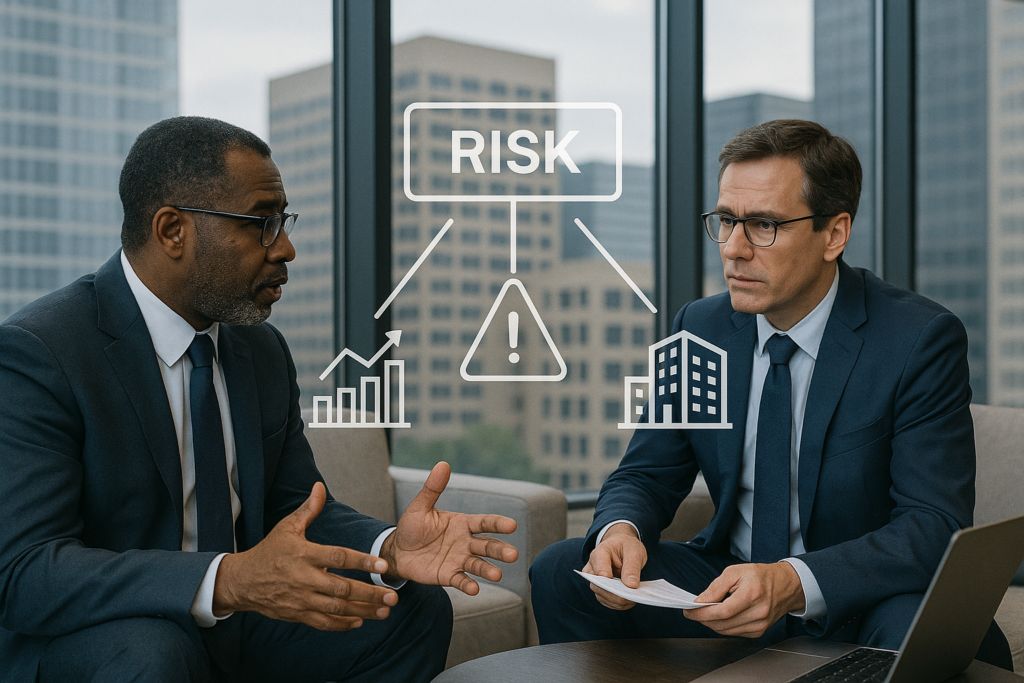Most investors perceive risk as the possibility of a loss. Sometimes, risk is visible and measurable; other times, it’s hidden and difficult to quantify.
Risk has two core dimensions: likelihood and impact.
Let’s start with a simple coin-flip game to understand visible and measurable risk:
The Rules:
- Heads: You win $1,000
- Tails: You lose $950
- 50/50 chance for each flip
- Let’s say we play the game 10 times
Possible Outcomes:
- Flip 10 Heads: Win $10,000
- Flip 10 Tails: Lose $9,500
- Flip 5 Heads & 5 Tails: Net gain of $250
There are many other possible outcomes, but these three illustrate extreme high, extreme low, and average scenarios.
The likelihood of flipping 10 Heads or 10 Tails in a row is just 1 in 1,024 (about 0.098%), but the impact is significant. The chance of landing exactly 5 Heads and 5 Tails is around 24.6%, with a small expected gain.
Would most investors play this game 1,000 times? Likely yes — as long as they can stomach the potential early losses.
This game has a clear mathematical edge in your favor. However, the emotional tolerance for risk — especially in the short term — can make or break participation.
Hidden Risks: Real-Life Example
Now let’s consider a real-world example where risk is harder to quantify:
A few weeks ago, I was driving my daughter and her teammates back from figure skating practice — a two-hour drive through heavy New York City traffic. After a stretch of congestion, traffic cleared and suddenly two BMWs started zigzagging aggressively through lanes. Moments later, one of them crashed into a conservative driver ahead.
It was shocking. The impact could’ve been catastrophic. But what’s the likelihood of that happening to you or me on any given day?
Hard to measure. And yet we take on these risks every day, believing the reward justifies the risk.
Understanding Risk in Investing — Especially Real Estate
Every time you write an investment check, you’re taking on some level of risk — even in so-called “safe” investments.
Consider U.S. government treasury bonds: backed by the full faith and credit of the U.S., they still carry risk. The market prices this via interest rates. Equities carry even more risk, though it’s harder to define.
One major misconception: when prices go up, many assume risk goes down. The opposite is often true.
High price = higher risk. Low price = lower risk.
Rising prices can create complacency and mask growing risk. Meanwhile, assets beaten down by pessimism can actually be less risky, due to the value you’re getting at a lower price.
Warren Buffett says: “Be greedy when others are fearful, and fearful when others are greedy.”
Market cycles often drive irrational behavior — euphoric buying at the top, panicked selling at the bottom.
Risk vs. Reward in Real Estate
Most real estate investing happens privately. Public REITs offer liquidity, but our focus is on the fundamentals of private real estate investing.
Real estate tends to be less volatile and more predictable than equities due to:
- Stable cash flows
- Predictable rent growth
- Transparent expense structures
This creates predictable income and growth in Net Operating Income (NOI), leading to long-term appreciation.
Key risks in real estate can be mitigated:
- Interest Rate Risk: Use fixed-rate debt, conservative leverage (5–10 years for commercial, 15–30 for residential)
- Revenue Stability Risk: Favor properties with long-term leases and strong tenant credit
A classic real estate investing strategy is to lock in a positive spread between the capitalization rate (CAP rate) and the mortgage interest rate.
Example:
- Property Price: $50,000,000
- NOI: $4,000,000
- CAP Rate: 8%
- Loan: $30,000,000 at 6.5%
- Spread: 1.5% — which acts as your margin of safety
Projects with strong capitalization, conservative debt, and high-credit tenants offer stable, predictable performance.
Still, black swan events like COVID-19 can disrupt everything. Risk management is about how well you’re prepared for the unexpected.
Opportunity Cost Risk: A Risk You Can’t See — Until It’s Too Late
Many investors miss out by waiting for the “perfect” time. After a correction, they hesitate — and miss the recovery.
Timing the market is hard. Sitting out too long becomes its own risk: opportunity cost.
Markets — including real estate — move in cycles.
Post-COVID, the Fed’s rapid rate hikes reset commercial real estate valuations. Many properties are now trading 25–30% below peak pricing, creating attractive buying opportunities.
Ironically, many investors who chased deals at the top are now sitting on the sidelines — missing the recovery at the bottom. They’ve fallen into both the market peak trap and the opportunity cost trap.
Final Thoughts: Sharpen Your Risk vs. Reward Skills
Every investment involves risk. Smart investing means:
- Understanding the likelihood and impact of risks
- Evaluating realistic reward scenarios
- Staying mindful of market cycles
- Diversifying
- Investing consistently over time
Avoiding risk altogether often means missing out on return. But understanding it — and managing it — is the key to long-term investing success.
Keep sharpening your ability to evaluate Risk vs. Reward. That’s where long-term wealth is built.

